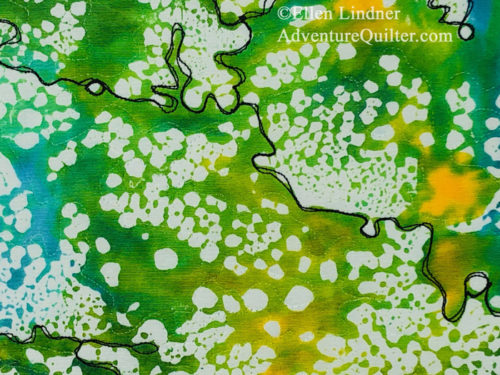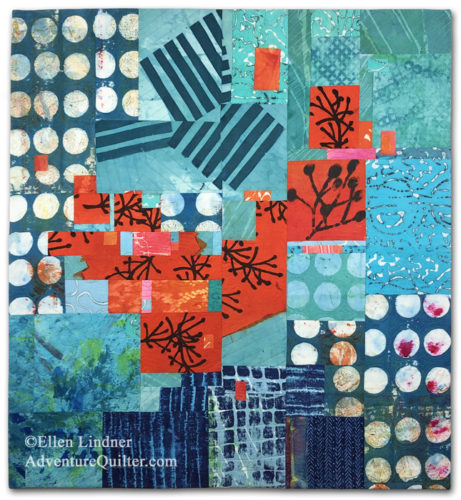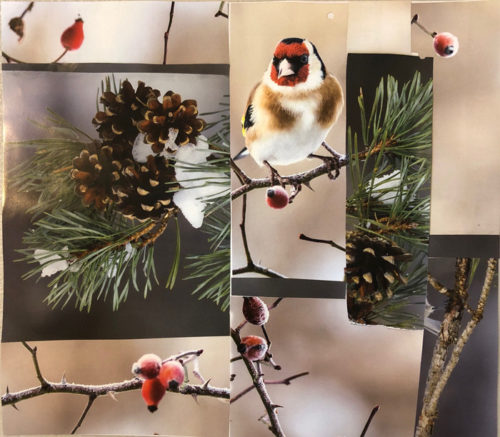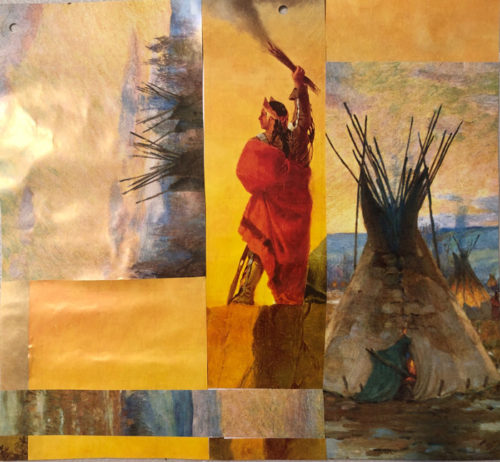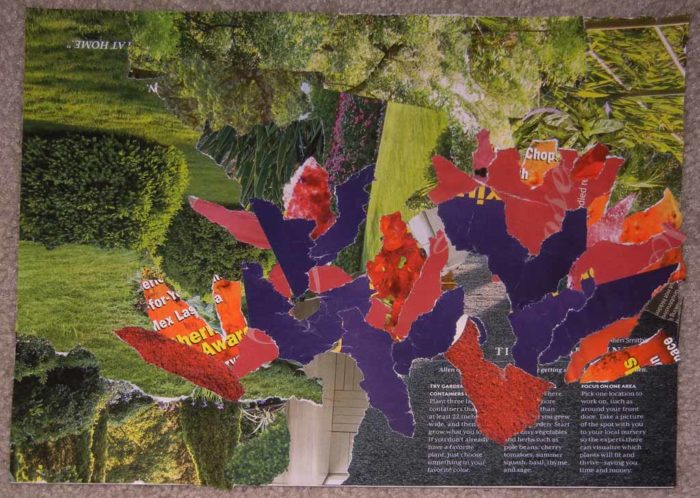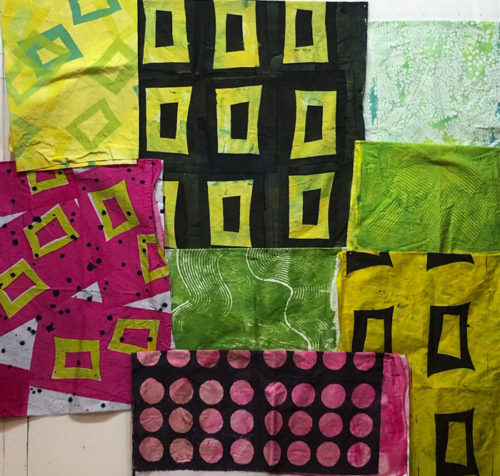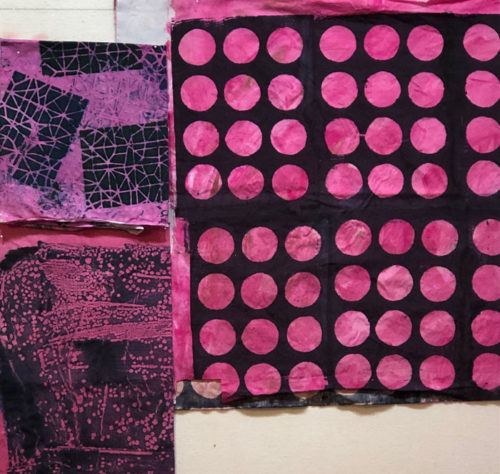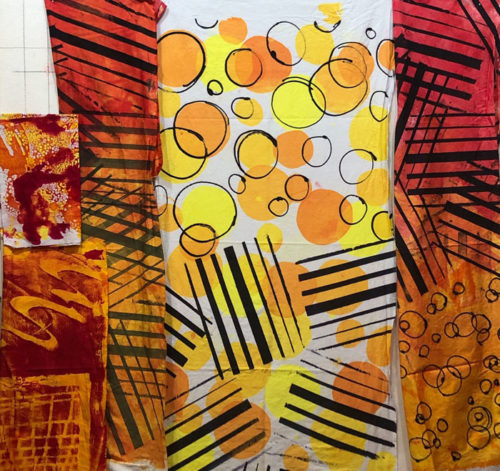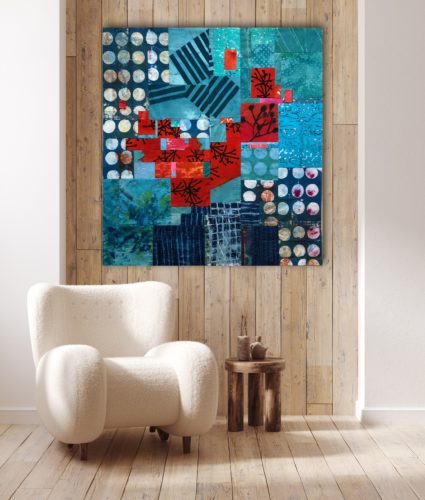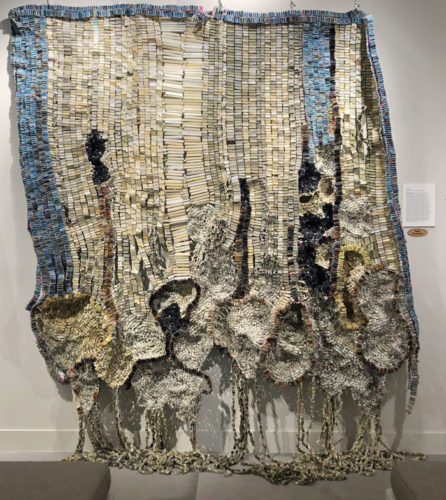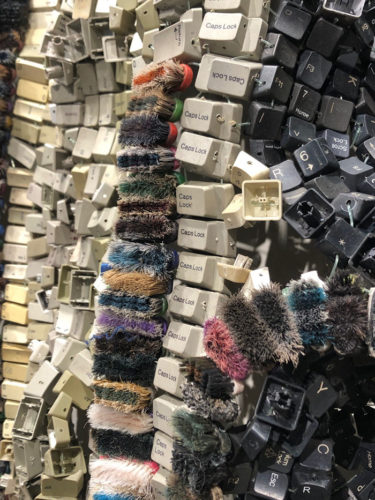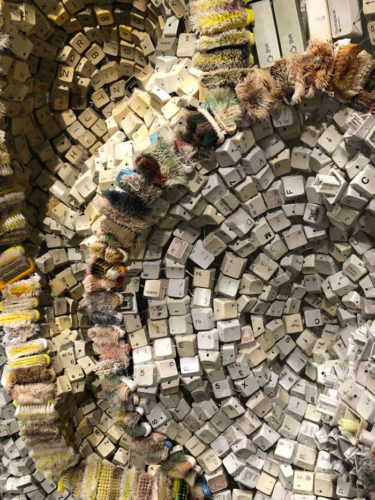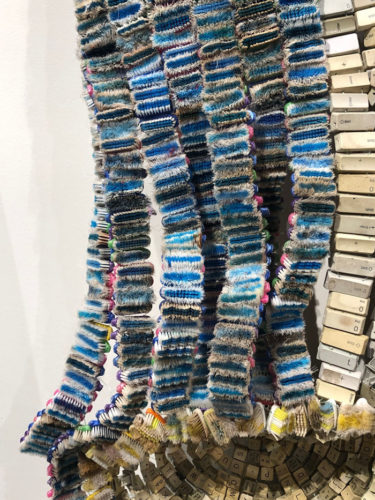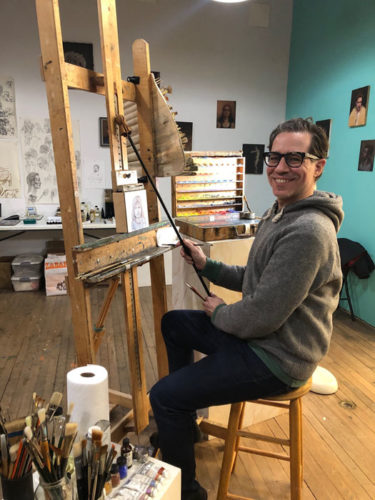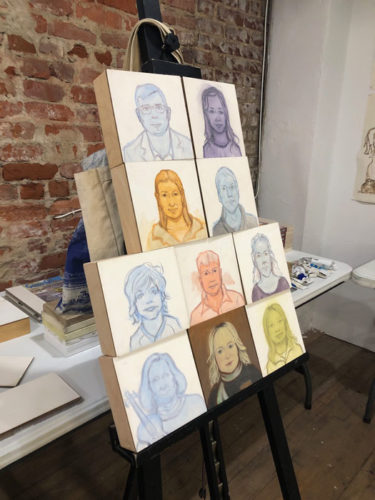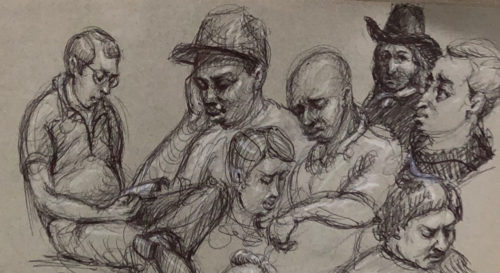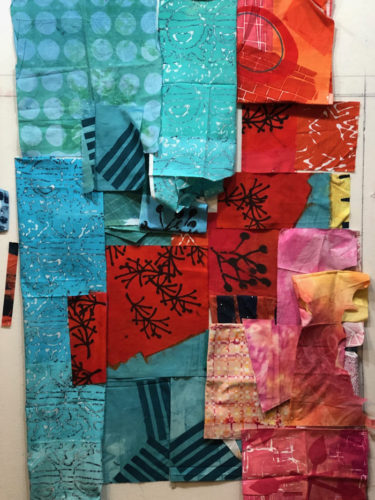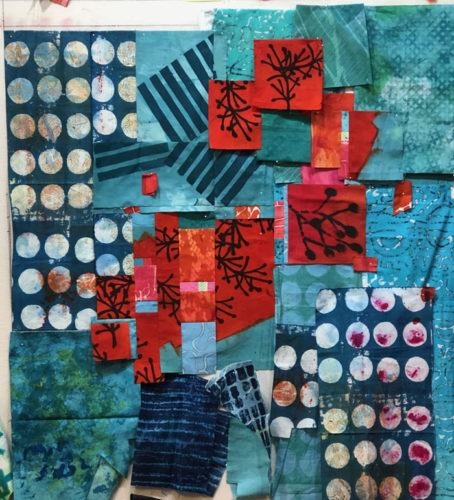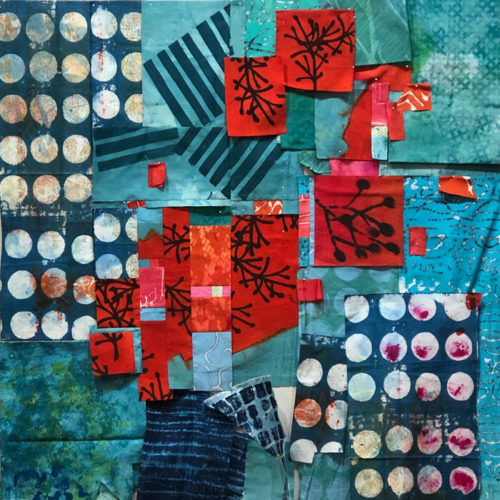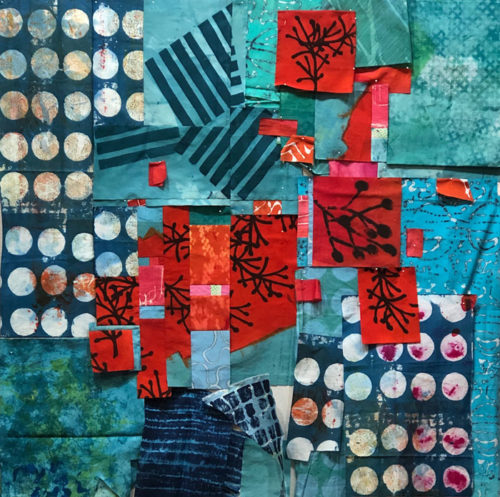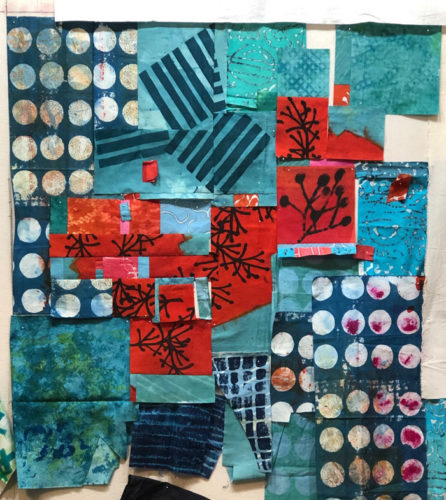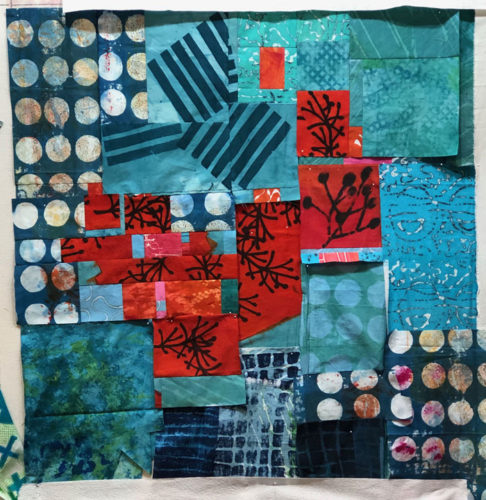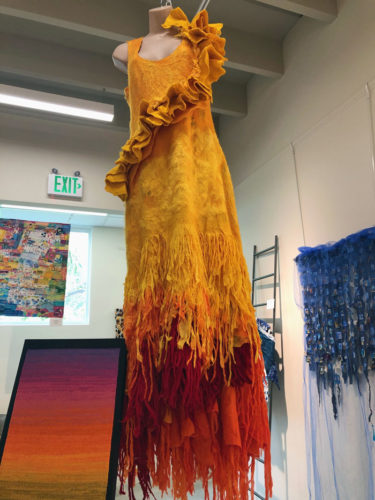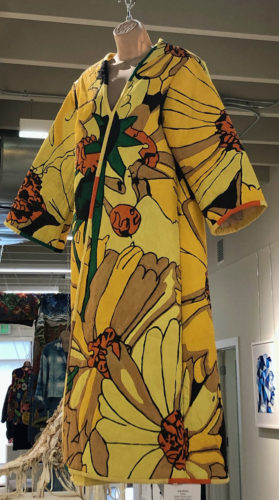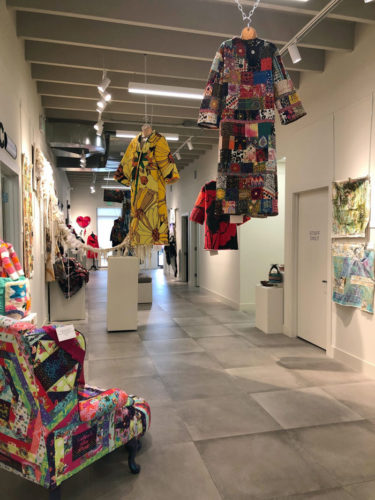Wow! The Elegant Threads fashion show was pretty amazing! I didn’t get to attend, but a friend sent me photos. Just check these out.
The show included garments, jewelry, and accessories. In this case, the green necklace is the featured item. It is made (crocheted???) from wire.

My friend, Perlie Petrillo, made this garment and she was kind enough to provide all these photos. She intended the head wrap to be a sash, but they styled it differently here. A versatile piece.

This was the Viewers’ Choice. It was constructed from old quilts purchased at garage sales. The different sections were joined together with zippers. I was surprised to see how well it moved, even with batting.
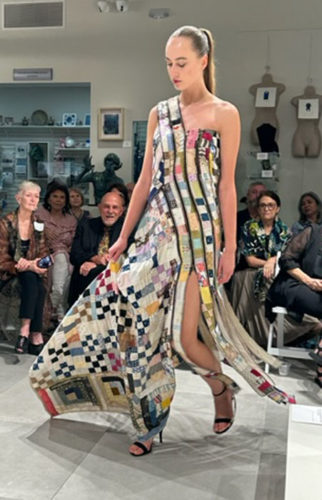
These next two garments were made by Amy Blicher. They’re both very wearable.
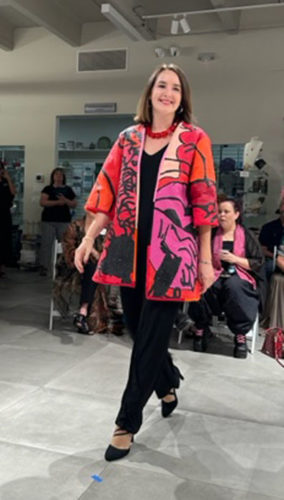
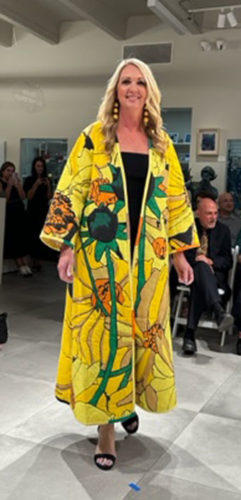
Can you say “goth?” My friend referred to this garment as “the leather dress.” But, I’m thinking it was actually recycled tires. Interesting either way.
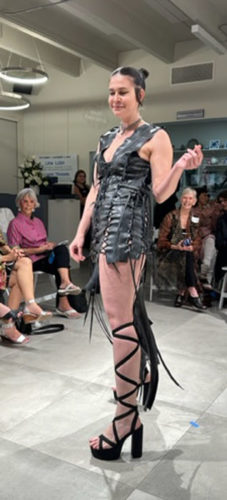
Marjolaine Arsenault was the maker of this lovely felted shawl.
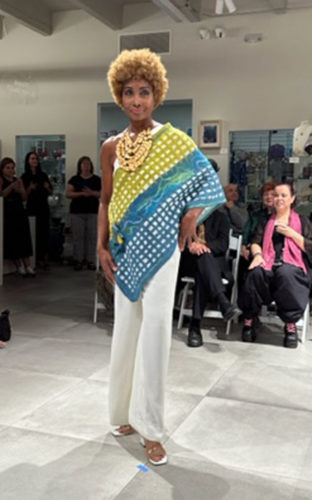
This felted dress was made by Charity Van de Meer Musma.

I think this garment was crocheted and felted.
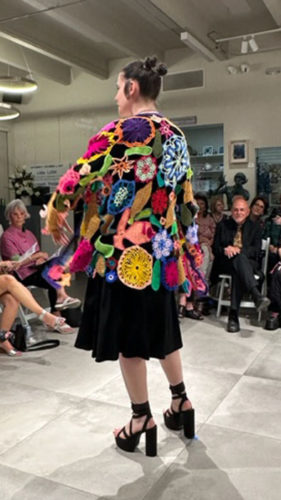
This model could wear anything! I mean, what kind of confidence does it take to wear a top made entirely from strands of beads?!?
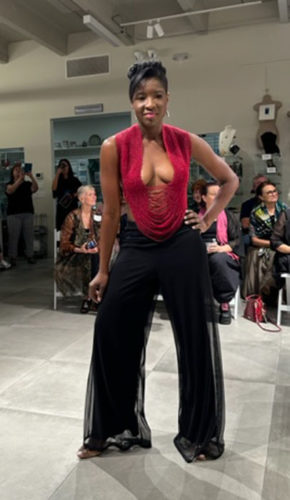
Although the fashion show is now history, the entire exhibit is still on display through December 2nd. I recommend that you hurry to see it at the Lighthouse Gallery, Tequesta, FL.
If you haven’t already, be sure to read my earlier post about the exhibit.
Ellen Lindner

